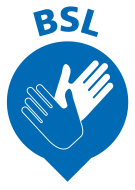Providing the ambulance response to major incidents
Our Hazardous Area Response Team (HART) is made up of specially trained paramedics who are trained and equipped to help in large-scale emergencies, such as building collapses, train crashes and large-scale motorway accidents, or incidents involving hazardous materials.
They work alongside police and fire and rescue services within the ‘inner cordon’ or ‘hot zone’ of the major incident, and their job is to help save lives by triaging and treating casualties. They are also there to look after other emergency personnel who can become injured themselves when attending these types of emergencies.
Highly skilled personnel
Members of HART begin their career as a paramedic on an ambulance or response car. After gaining a minimum of two years’ experience in A&E operations, they can then apply for HART training, which gives them the skills they need to care for patients in these difficult situations.
As well as learning the practical aspects of the HART response, such as working in a confined space or off-road driving, they are also trained in extended clinical techniques. This may include using surgical skills under authorisation from a doctor, such as carrying out a tracheostomy which can keep patients alive long enough to reach specialised medical care.
They are also trained in pre-hospital trauma life support (PHTLS) so they can provide enhanced care.
Responding to a range of incidents
HART teams are trained to respond to a wide range of incidents:
- Hazardous Materials/CBRN(e) – Chemical, Biological, Radiological, Nuclear and Explosives.
Providing NHS specialist healthcare inside the inner cordon where hazardous materials are present. - MTA – Marauding Terrorist Attack
Providing the NHS response to acts of terrorism involving explosive devices, firearms, knives and/or weaponised vehicles. - SWAH – Safe Working at Height
Providing care for patients taken ill at height, either on man-made structures or within the natural environment. - Confined Spaces
Helping patients caught in substantially enclosed spaces following a building collapse, where compromised atmospheres are present and entrapment of patients is hampering the delivery of care. - Unstable Terrain
Helping patients caught within active rubble piles or where rural access or difficult terrain is providing a specific challenge to the rescue effort. - Water Operations
Helping patients caught in water environments, for example swift water rescue, or where urban or rural flooding has occurred. This includes the deployment of boat operations.

